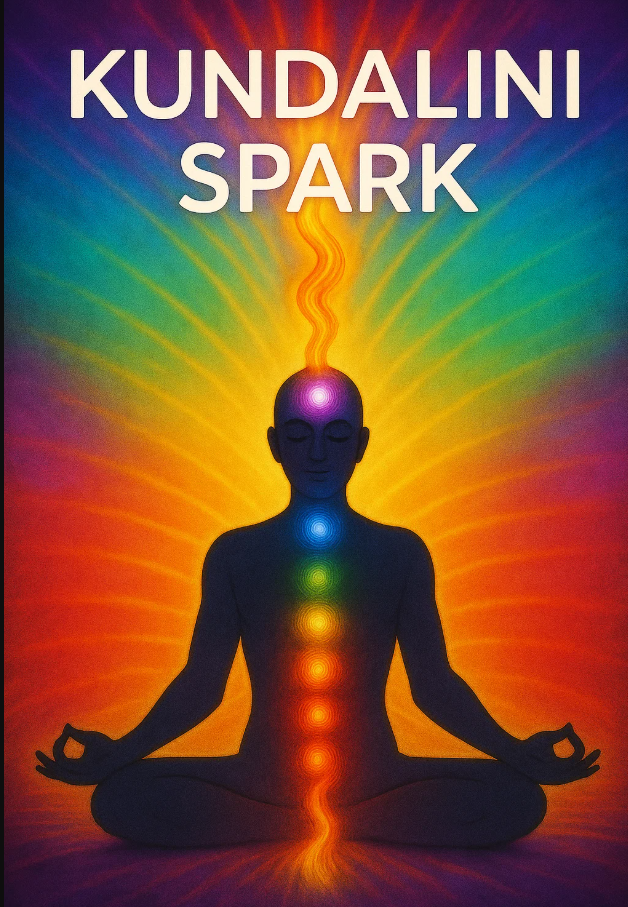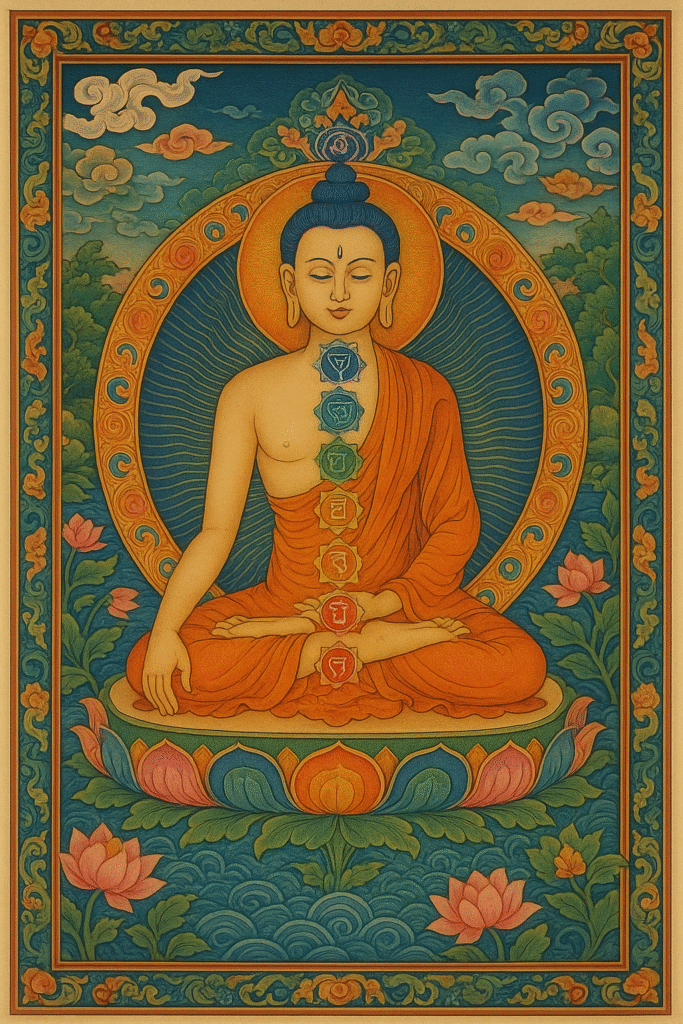Ever wondered why serpents and spiraling energies keep showing up in art across different cultures and times? It’s not just a coincidence – these powerful symbols often represent Kundalini, the sacred spiritual energy that ancient traditions say lies dormant within each of us.
From intricate Hindu temple carvings to Renaissance masterpieces and modern digital creations, artists have been captivated by this mysterious force. They’ve found countless ways to capture its essence, creating visual guides that help us understand and connect with our own inner energy.

Foundational Concepts
Kundalini represents sacred feminine energy in Hindu traditions, taking the form of a sleeping serpent coiled at the spine’s base. This powerful force rests in the root chakra (Muladhara), waiting for spiritual awakening.
Think of Kundalini & Art as your hidden superpower – it’s the raw energy that helps you reach your highest spiritual potential. When it wakes up, this energy travels up through your spine’s central channel (Sushumna nadi), lighting up each chakra along the way.
The seven chakras work like energy stations, and they need to be open for Kundalini to flow smoothly. If they’re blocked, you might hit some bumps on your spiritual journey. The serpent symbol you’ll often see in Eastern Art traditions? That’s Kundalini in its resting state, ready to rise and bring about inner change.
Historical Representations Across Cultures
Hindu art shows this sacred energy through goddess figures like Durga, Kali, and Parvati. You’ll spot these powerful feminine forms in temple carvings, often with multiple arms showing their all-reaching influence. In Buddhist traditions, the detailed Thangka paintings act as meditation maps, helping you picture the energy centers in your body.
Ever noticed how some Biblical stories mirror historical representations of groups? Take Moses and the burning bush – it’s a lot like the fiery energy people feel during spiritual awakening. And when Moses lifted up that bronze serpent for healing? It looks pretty similar to how contemporary art styles show Kundalini rising up the spine. Even Christian art shows the Holy Spirit as flames above heads, just like the crown chakra activation many yogis talk about.
Renaissance Art and Kundalini
Look closely at Albrecht Dürer’s woodcuts, and you’ll spot something fascinating – hidden spiritual symbols that match Conceptual Understandings about Eastern energy teachings. His famous Adam and Eve piece tells a story beyond the biblical tale: the tree trunk mirrors your spine’s central energy channel, while Eve stands for the moon energy (left side) and Adam for the sun energy (right side).
When you look at Dürer’s scenes of thieves turning into angels during the crucifixion, you’re seeing the same kind of change that happens when your inner energy rises.
It’s wild how these European artists picked up on spiritual energy patterns without knowing about Eastern teachings – almost like they tapped into something that’s part of all human wisdom.
Traditional Eastern Artistic Expressions
The Seven Chakra Kundalini Thangka tells beautiful stories through its intricate details. These sacred paintings work like roadmaps for your spiritual journey, with artists passing down their techniques through generations. Every brush stroke carries meaning – from the cool blues of your throat chakra to the fiery reds at your base.

Think of the three energy channels in your body like rivers: Ida flows cool and calm on your left, Pingala brings warmth on your right, and Sushumna runs straight up your center. Artists show these with specific colors and patterns, helping you picture the energy moving through your body.
The red Bindu symbol, often painted with a glowing aura, shows that magical moment when your inner energy starts to wake up. It’s like catching the first rays of sunrise in a painting.
Contemporary Artistic Interpretations
Today’s artists bring fresh eyes to Kundalini art, mixing old wisdom with new techniques. Digital artists create flowing animations that show how energy moves through your chakras – it’s like watching your inner power come alive on screen.
You’ll find artists blending Hindu symbols with Japanese manga or African patterns, showing how spiritual energy speaks to everyone. Some make interactive art where you can click through the chakras, hearing sounds and seeing colors that match each energy center.
Want to feel more connected during meditation? Many people use these contemporary art styles as focus points. Whether it’s a 3D rendering of the chakras or a mixed-media painting of the rising serpent, these pieces help you tune into your body’s energy. It’s like having a visual guide for your inner journey.
Symbolic Elements and Motifs
The serpent appears throughout art history as a powerful symbol of Kundalini energy. In yoga traditions, you’ll see it coiled at the base of the spine, ready to spring into action. It’s fascinating how this snake imagery shows up in everything from ancient temple carvings to modern spiritual artwork.
Watch for flames and light in Kundalini art – they’re not just pretty details. These burning symbols show what it feels like when your inner energy wakes up. Artists often paint glowing halos or streaming rays to catch that electric feeling of spiritual awakening.
The spine takes center stage in most Kundalini artwork. You might see it as a straight tree, a staff, or even a mountain path reaching skyward. This central line shows where your energy travels on its upward journey.
Look closely at the circular patterns in essential art styles – those aren’t just random designs. These mandalas map out your energy centers, giving you a blueprint for meditation. Each geometric shape carries specific meanings about different chakras and their powers.
Influential Artists and Their Contributions
The skilled Thangka masters paint spiritual energy with precise attention to detail, following age-old methods passed down through centuries. Each stroke captures the subtle body’s energy system, showing chakras and Kundalini paths with stunning clarity.
Think of Wassily Kandinsky’s work – his swirling colors and shapes echo the same energy patterns you’ll find in chakra art. Though he might not have known about Kundalini directly, his conceptual understandings about color and spirit line up perfectly with Eastern energy teachings.
Today’s energy artists mix old and new, creating fresh ways to show spiritual power. They blend traditional serpent symbols with digital effects or craft immersive spaces where you can walk through giant chakra installations.
When artists team up with meditation teachers and energy workers, magic happens. Together, they create experiences that go beyond just looking at art – you might find yourself in a room where sounds, lights, and moving images help you feel your own Kundalini energy coming alive.
